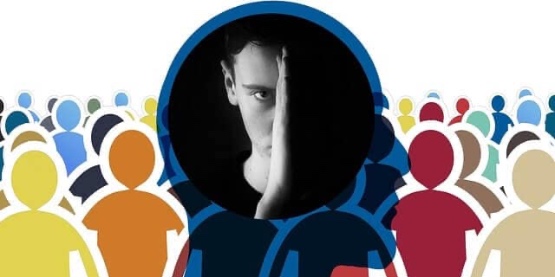
A specific phobia involves an intense, persistent fear of a specific object or situation that is disproportionate to the actual risk. There are many types of phobias and it is not unusual to have a specific phobia about more than one object or situation. Specific phobias can also occur with other anxiety disorders. Common categories of specific phobias are fear of:
- Situations such as airplanes, confined spaces, or going to school
- Natural events such as thunderstorms or heights
- Animals or insects such as dogs or spiders
- Conditions of blood, injection, or injury, such as needles, accidents, or medical procedures
- Others such as choking, vomiting, loud noises or clowns
A phobic response is a response that results from a phobia. Phobic reactions are symptoms of a phobia, such as intense anxiety or sweaty palms, and can range from mild to severe. A mental health professional can use a person's phobic responses to help make an accurate diagnosis.
What is Phobia?
Phobias are classified as anxiety disorders. They are characterized by an irrational fear that is disproportionate to the actual threat of a particular object or situation. There are many different types of phobias. The person can take small and large steps in order not to encounter the thing he fears. Encountering or even thinking about the fear object can cause intense and disturbing phobic reactions.
Types of Phobias
There are three categories of phobias outlined in the "Diagnostic Statistical Manual of Mental Disorders, Fifth Edition" (DSM-5), the manual published by the APA describing diagnostic criteria for mental disorders:
- Social phobia (now known as social anxiety disorder) is the fear of being in social situations where you may be judged or embarrassed.
- A specific phobia is a fear of a specific object, thing, or situation, such as spiders, thunderstorms, clowns, or needles.
- Agoraphobia is the fear of being in a place where it may be difficult to escape or seek help.
- Types of Phobic Reactions
Symptoms of phobias or phobic reactions can be psychological (such as an intense feeling of discomfort or premonition), cognitive (such as negative thoughts), physical (such as crying or gastrointestinal distress), or behavioral.
Phobic Responses in Social Phobia
Social phobia is the fear of being judged by others. An intense fear of embarrassing or humiliating yourself in small or large groups. Someone with social phobia may avoid situations that they think will cause them to make mistakes, be criticized or ridiculed. This may mean avoiding eating or drinking in front of others, going to work, or meeting new people. Fear can also manifest in performance situations such as public speaking.
According to research results, phobias are generally related to the amygdala. The amygdala is located behind the pituitary gland in the brain. The amygdala is the rate that triggers the release of "fight or flight" hormones. These aim to put the body and mind in a highly alert and stressful state. The goal is the survival of the body! Responses are produced by the amygdala focused on survival.
Specific phobias and different types of phobias
It is the name of the fear of certain situations and objects, such as height, death, animals (insect, snake, dog, etc.), seeing blood or seeing an injection. Anxiety may increase in situations where even only the picture of the feared object is not actually encountered. Specific phobias are mostly seen in childhood and 20s. What does sociophobic mean? Specific phobias occur as a result of a dangerous, bad experience or information received from the environment.
Types of phobias include:
- Ablutophobia: fear of bathing
- Afidophobia: fear of snakes
- Agoraphobia: fear of open places
- Ailorophobia: fear of flowers
- Acrophobia: fear of heights
- Aquaphobia: fear of water
- Anthophobia: fear of people
- Arithmophobia: fear of numbers
- Astraphobia: fear of lightning
- Brontophobia: fear of thunder
- Equinophobia: phobia of horses
- Cytiophobia: fear of eating
- Tachophobia: fear of high speed
- Thalassophobia: fear of the sea or ocean
- Tomaphobia: fear of surgery
- Traumaphobia: fear of injury
- Trichinophobia: fear of food poisoning
- Trypanophobia: fear of getting a shot or a shot
- Zoophobia: fear of animals
